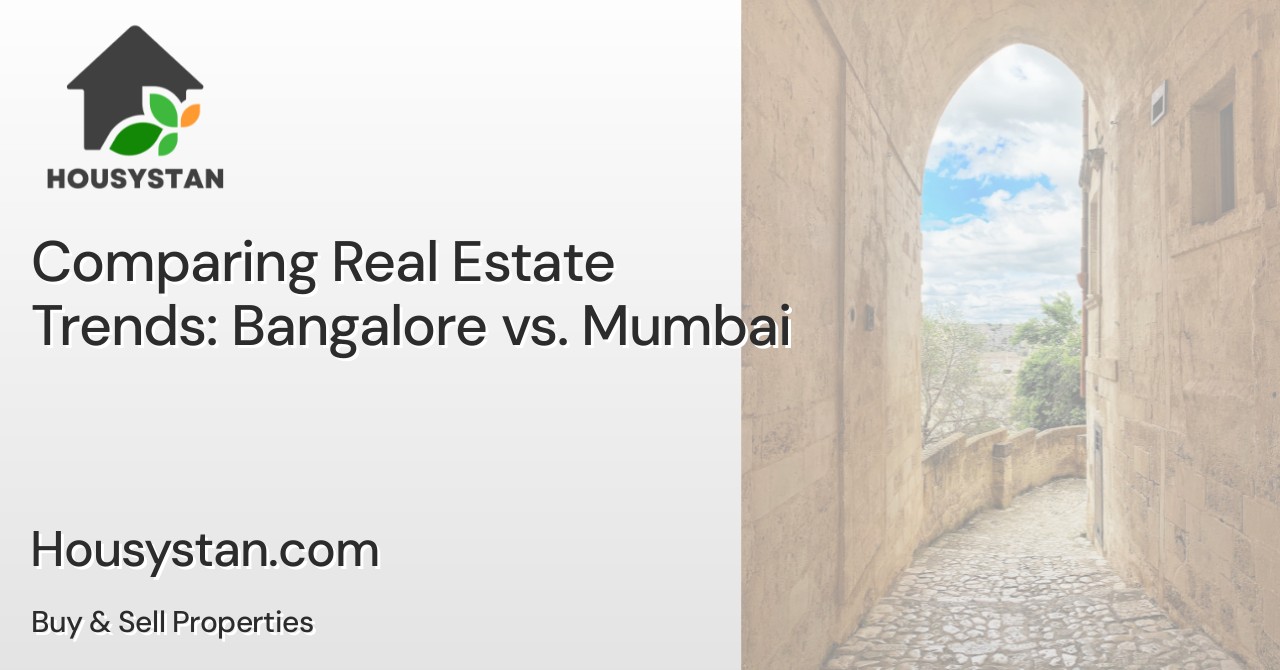Comparing Real Estate Trends: Bangalore vs. Mumbai
Read latest blogs and articles from Housystan

The Information mentioned here was last updated on:
14/12/2025Comparing Real Estate Trends: Bangalore vs. Mumbai
When analyzing India’s real estate market, two major cities stand out for investors and homebuyers: Bangalore and Mumbai. Both cities offer distinct advantages, market dynamics, and investment opportunities. Understanding the fundamental differences between Bangalore and Mumbai’s property sectors can help buyers, investors, and developers make informed decisions, especially in today’s rapidly evolving real estate landscape.
Location and Market Drivers
- Verified Tenants/Buyers
- Unlimited Property Listing
- Zero subscription/charges fee
Bangalore, often referred to as India’s Silicon Valley, has seen rapid expansion due to its thriving IT and tech industries. The city attracts a young, professional workforce, fueling demand for residential apartments and modern office spaces. In contrast, Mumbai, the country’s financial powerhouse, remains a global hub for commerce, entertainment, and trade. Its prime property markets are driven by business executives, entrepreneurs, and expatriates seeking luxury living and high-end commercial spaces.
Price Trends and Affordability
Property prices in Mumbai are among the highest in India, with limited land availability pushing rates upward across neighborhoods like South Mumbai, Bandra, and Andheri. Even suburban areas command premium rates due to connectivity and infrastructure development. Bangalore, on the other hand, is known for relatively affordable property rates, particularly in emerging locations such as Whitefield, Electronic City, and Sarjapur Road. This affordability makes Bangalore attractive for first-time buyers and young professionals seeking value for money.
Infrastructure and Connectivity
Mumbai boasts a well-established transport network, including suburban railways, metro lines, and expressways. However, congestion and high population density present ongoing challenges. Bangalore’s infrastructure is rapidly improving, with new metro lines, ring roads, and airport connectivity enhancing the city’s appeal. Areas near tech parks and industrial hubs are especially popular among working professionals.
Investment Potential and Future Outlook
Bangalore’s steady job growth and influx of technology companies continue to drive residential and commercial demand. Real estate in the city is expected to appreciate steadily, especially in tech-focused corridors. Mumbai, despite higher entry costs, offers unmatched rental yields in premium locations, making it ideal for long-term investors seeking capital appreciation and rental income.
In summary, Bangalore’s affordability and tech-driven growth contrast with Mumbai’s premium pricing and commercial advantage. Choosing between these cities depends on individual investment goals, desired returns, lifestyle preferences, and risk tolerance. For those seeking strong appreciation and a modern urban lifestyle, both Bangalore and Mumbai offer distinct pathways to success in India’s dynamic real estate sector.